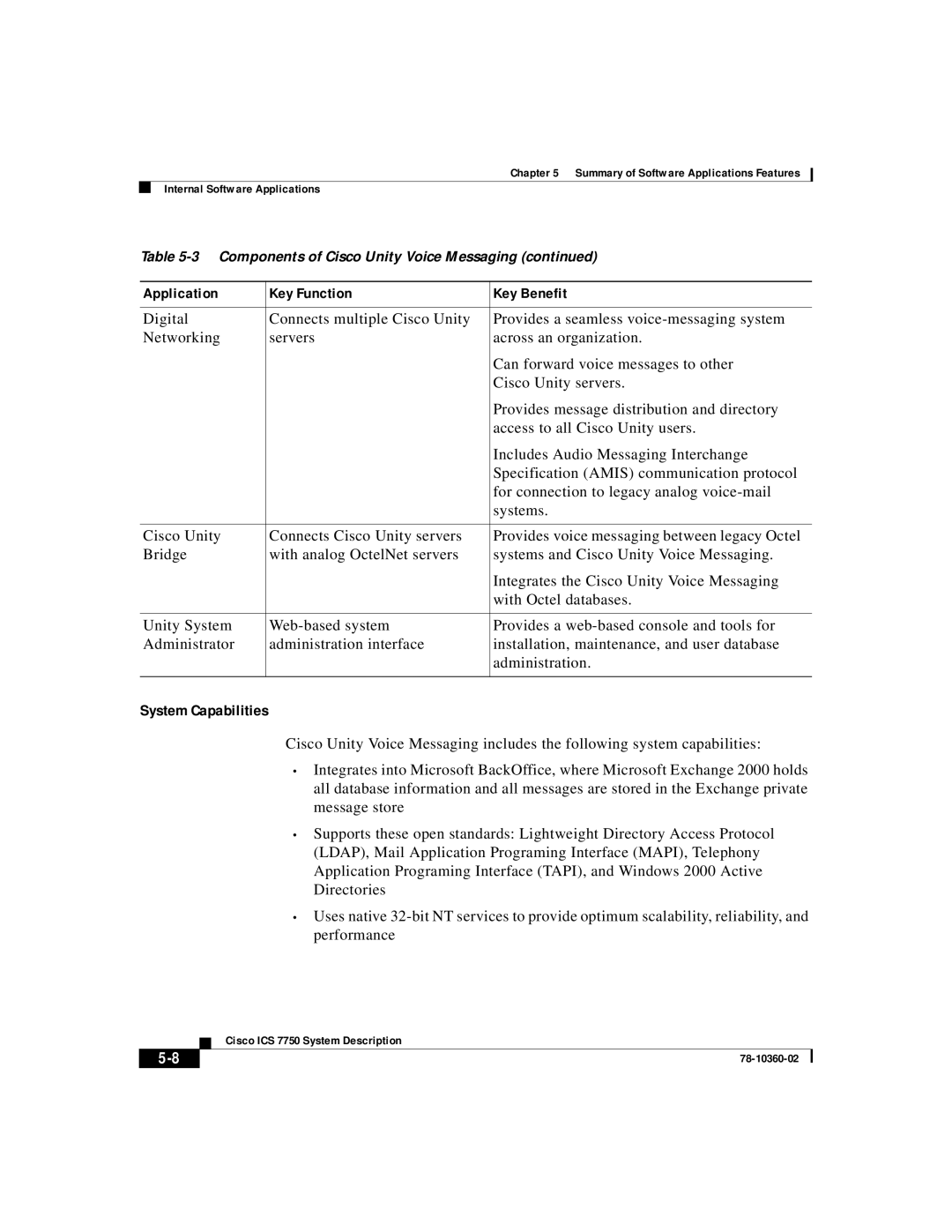
Chapter 5 Summary of Software Applications Features
Internal Software Applications
Table 5-3 Components of Cisco Unity Voice Messaging (continued)
Application |
| Key Function | Key Benefit |
|
|
|
|
Digital |
| Connects multiple Cisco Unity | Provides a seamless |
Networking |
| servers | across an organization. |
|
|
| Can forward voice messages to other |
|
|
| Cisco Unity servers. |
|
|
| Provides message distribution and directory |
|
|
| access to all Cisco Unity users. |
|
|
| Includes Audio Messaging Interchange |
|
|
| Specification (AMIS) communication protocol |
|
|
| for connection to legacy analog |
|
|
| systems. |
|
|
|
|
Cisco Unity |
| Connects Cisco Unity servers | Provides voice messaging between legacy Octel |
Bridge |
| with analog OctelNet servers | systems and Cisco Unity Voice Messaging. |
|
|
| Integrates the Cisco Unity Voice Messaging |
|
|
| with Octel databases. |
|
|
|
|
Unity System |
| Provides a | |
Administrator |
| administration interface | installation, maintenance, and user database |
|
|
| administration. |
|
|
|
|
System Capabilities |
|
| |
|
| Cisco Unity Voice Messaging includes the following system capabilities: | |
•Integrates into Microsoft BackOffice, where Microsoft Exchange 2000 holds all database information and all messages are stored in the Exchange private message store
•Supports these open standards: Lightweight Directory Access Protocol (LDAP), Mail Application Programing Interface (MAPI), Telephony Application Programing Interface (TAPI), and Windows 2000 Active Directories
•Uses native
| Cisco ICS 7750 System Description |
|
